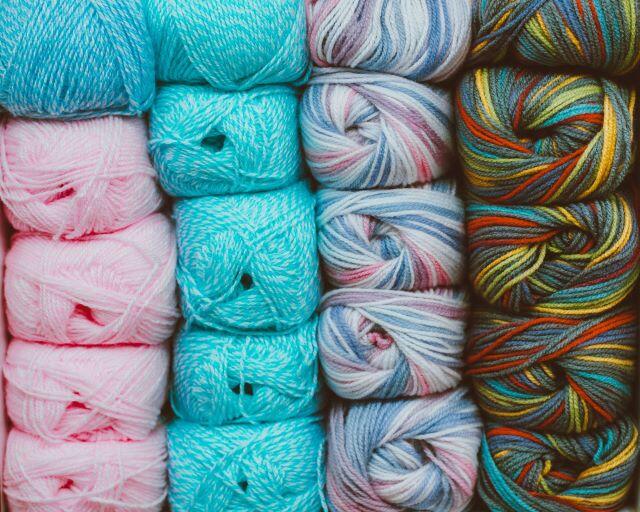Introduction
In the diverse world of yarns, milk cotton yarn is one that stands out due to its unique properties and ecological background. As consumers grow more conscious about the materials they use and their environmental impact, this yarn has gained attention as a sustainable and luxurious choice. This article delves into what the yarn is, its benefits, and its potential impact on the world of textiles.

What is Milk Cotton Yarn?
Milk cotton yarn is a blend of milk protein and cotton. The protein is derived from casein, a protein found in milk, which is then combined with cotton fibers to produce a yarn that is soft, smooth, and possesses a natural luster. The process to extract casein and turn it into a fiber was developed in the 1930s, but it has gained more traction in recent years due to its eco-friendly properties.
Benefits of Milk Cotton Yarn
- Eco-Friendly: One of the main appeals of milk cotton yarn is its sustainable nature. The process of extracting casein is less wasteful than other fiber-producing processes. When combined with organic cotton, the result is a fully biodegradable yarn.
- Softness and Strength: It is known for its exceptional softness, making it perfect for garments worn close to the skin, like baby clothes, lingerie, and luxury knitwear. Despite its softness, it’s also strong and durable.
- Breathability: Like cotton, milk cotton yarn is breathable. It wicks moisture away from the body, providing comfort and reducing the chances of skin irritations.
- Hypoallergenic: For those with sensitive skin or allergies, it is a great choice. Its natural properties mean fewer chemicals are used during processing.
- Natural Luster: Garments made from this yarn have a unique sheen, adding a touch of luxury to any project.
Comparing with other types of yarn
When it comes to choosing the right yarn for a project, there are numerous options available, each with its unique properties. For instance, wool is warm and elastic but can be itchy for some and isn’t always suitable for warm climates. Acrylic is affordable and widely available, but it doesn’t breathe well and isn’t biodegradable. Bamboo yarn, on the other hand, is soft, eco-friendly, and has natural antibacterial properties, but it can sometimes lack in durability.
Milk cotton yarn, in comparison, strikes a balance between the natural luster and softness of bamboo and the durability of cotton. One of its significant advantages over synthetic fibers like acrylic is its biodegradability and natural origins. While wool has the warmth that milk cotton might lack, the latter’s hypoallergenic properties make it a superior choice for sensitive skin. However, when compared to more conventional yarns like pure cotton or acrylic, it can be a bit on the pricier side, and its care requirements can be more specific. In essence, while this yarn offers a combination of luxury, sustainability, and comfort, its selection would depend on the specific needs of the project and the preferences of the crafter.
Ideal Projects for Milk Cotton Yarn
Given its unique properties, milk cotton yarn is a top choice for a variety of knitting and crocheting projects. Here are some areas where it truly shines:
- Baby Clothes and Accessories: Owing to its hypoallergenic properties and incredible softness, milk cotton yarn is an excellent choice for crafting baby clothes, blankets, and booties. The delicate skin of infants requires materials that are gentle and free from irritants, and milk cotton fits the bill perfectly.
- Summer Garments: The breathability of the yarn makes it ideal for summer wear. From lightweight tops to summer dresses and shawls, garments made from this yarn can keep the wearer comfortable even in warmer temperatures.
- Luxury Knitwear: The natural luster that milk cotton yarn possesses gives a luxurious touch to any garment. For those looking to craft high-end sweaters, cardigans, or scarves, this yarn offers both aesthetics and comfort.
- Lingerie and Delicates: Its soft texture combined with its strength makes this yarn a prime choice for crafting lingerie, camisoles, and other delicate wearables. Such garments need to feel good against the skin while also holding their shape, and milk cotton delivers on both fronts.
- Home Décor: Beyond wearables, milk cotton yarn is also suited for home décor projects, such as cushion covers, throws, and placemats as well as mandalas. Its softness and sheen can add a touch of luxury to living spaces.
In essence, for projects that demand both comfort and a touch of elegance, this yarn stands out as a superior choice. Its combination of durability, softness, and natural luster allows crafters to produce items that are as beautiful to look at as they are to touch.
Challenges and Considerations
While milk cotton yarn offers numerous advantages, there are also challenges and considerations:
- Cost: Producing milk cotton yarn can be more expensive than producing traditional cotton yarn, making products made from it pricier.
- Limited Availability: Due to its specialized production process, it might not be as readily available as other types of yarns in some regions.
- Care: While the yarn garments are durable, they may require specific care instructions to maintain their quality and appearance.
Conclusion
Milk cotton yarn is an intriguing blend of nature’s bounty: the softness and breathability of cotton combined with the unique properties of milk protein. As the textile industry continues to evolve with an increasing emphasis on sustainability, it’s likely that it will play a more prominent role in the future. For consumers and artisans alike, this yarn offers an opportunity to create beautiful, luxurious, and eco-friendly garments.